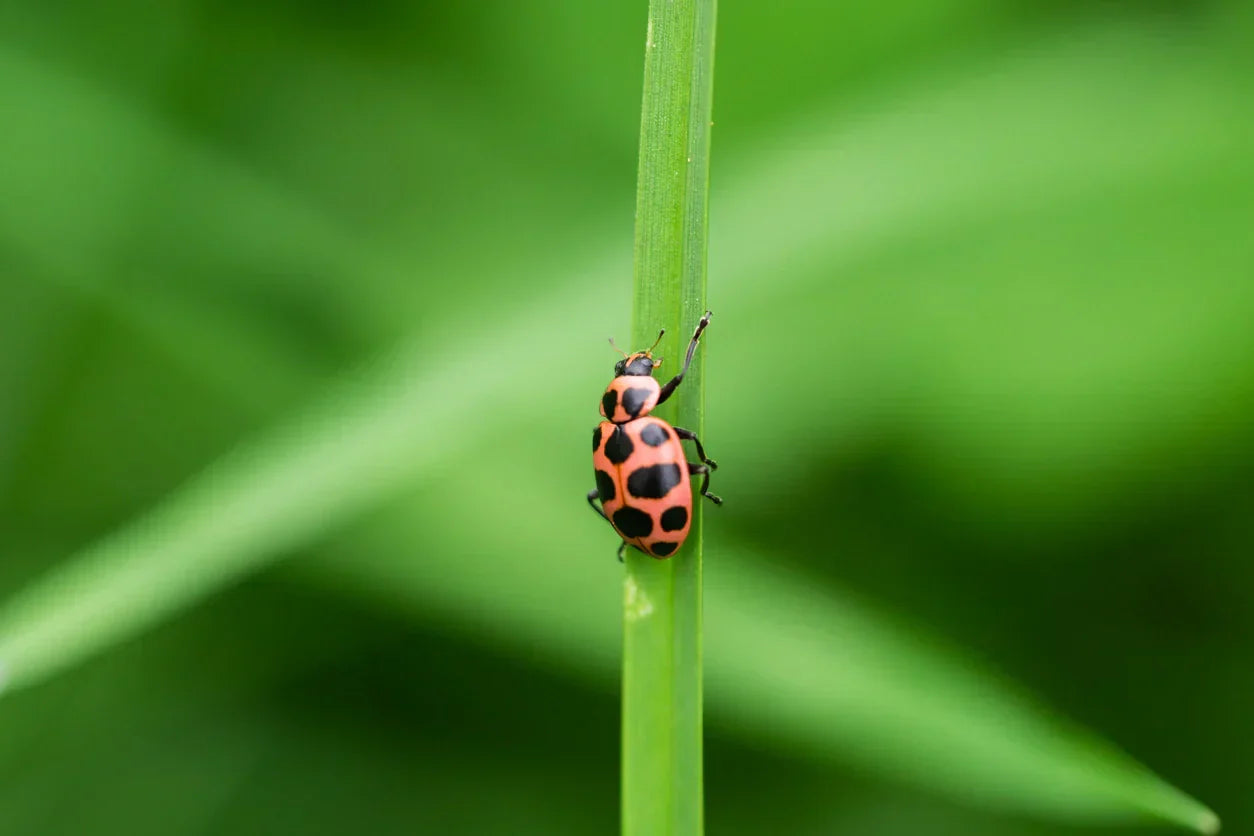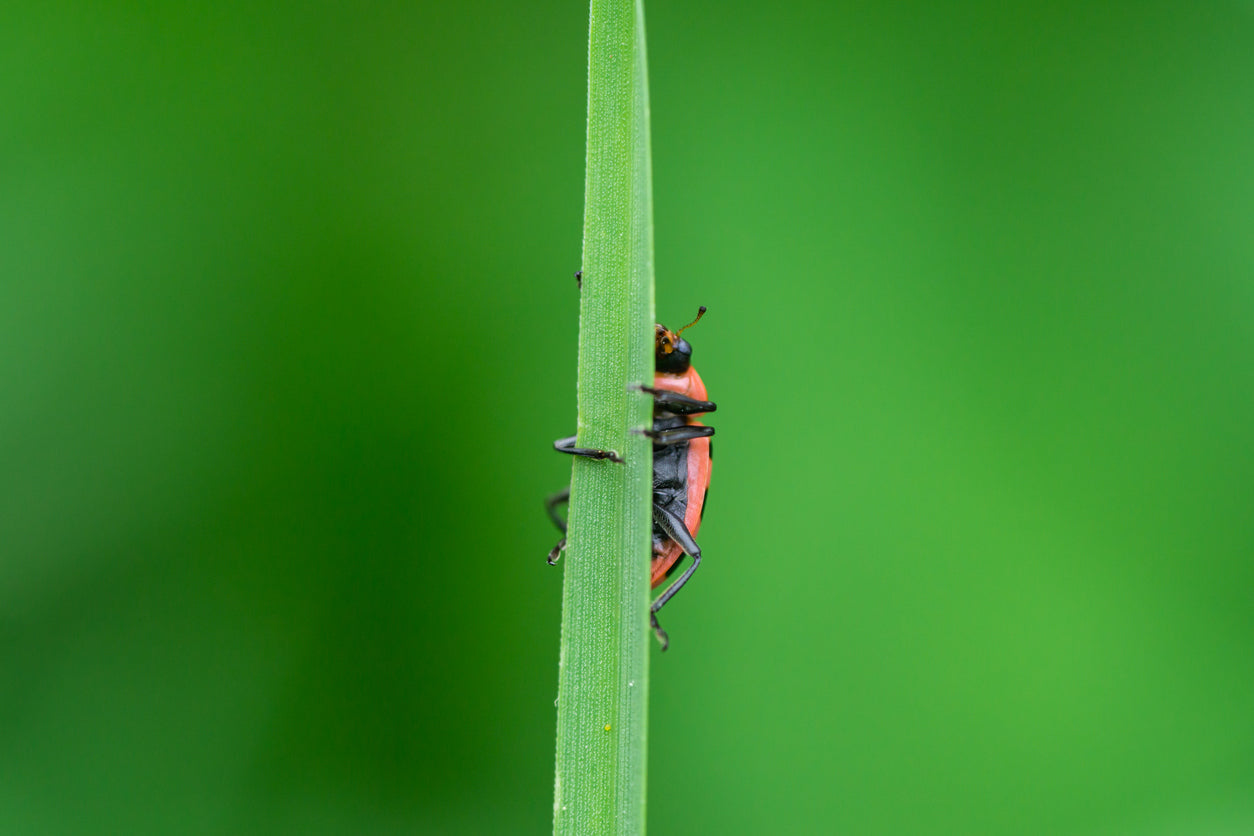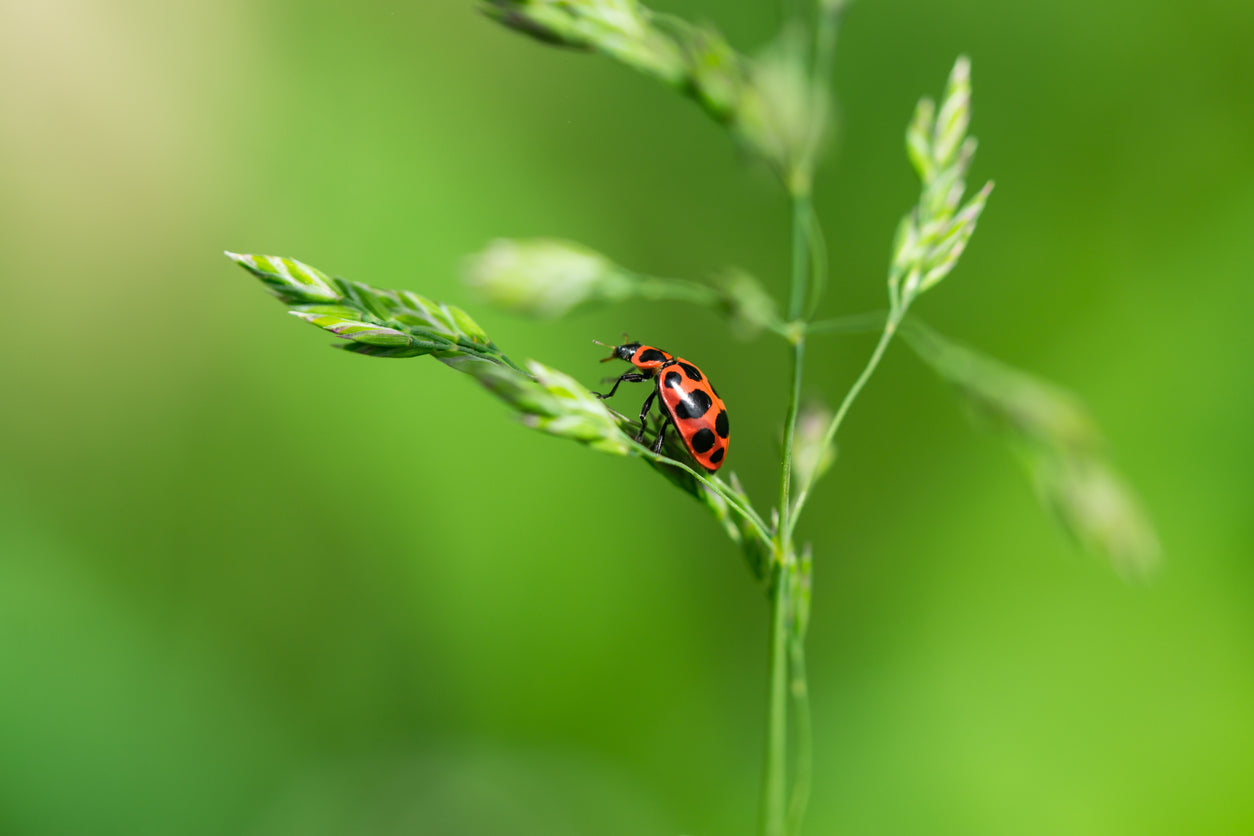Add description, images, menus and links to your mega menu
A column with no settings can be used as a spacer
Link to your collections, sales and even external links
Add up to five columns
Add description, images, menus and links to your mega menu
A column with no settings can be used as a spacer
Link to your collections, sales and even external links
Add up to five columns

Fun and Interesting Ladybug Facts for Kids
By Spencer McManamna March 25, 2024 5 min read
You're in luck! We have a lot of lovely ladybug info to share with you! In this article, you'll learn all about our colorful and lovable ladybug friends - how helpful they are to gardens, how they defend themselves, how they breathe, eat and more!
They Are Beneficial to Gardens
Ladybugs are not just delightful and charming garden residents! They are also nature's tiny guardians, silently working to protect your plants from harmful pests. Also known as ladybirds or lady beetles, ladybugs are predators with a mighty appetite for plant-eating insects. Their favorite snacks are aphids, mealybugs, mites, and scale insects - all common pests that can wreak havoc on your garden!
Ladybugs can consume vast quantities of aphids, which are notorious for infesting and damaging plants. A single ladybug can devour hundreds of aphids per day, making them invaluable allies in the battle against these tricky pests and their destructive behaviors. Plants like Dill, Yarrow and Fennel are known to attract ladybugs, so adding them to your garden can provide a natural layer of fortification.
Ladybugs use their “mandibles” to grasp and chew their prey, extracting vital nutrients while leaving behind a cleaner, healthier plant. This natural method of pest control not only protects your garden but also eliminates the need for harmful chemical pesticides. The next time you spot a ladybug in your garden, know that it's a tiny hero diligently working to keep your plants safe and flourishing!
Their Color is a Warning Sign to Predators
Ladybugs come in a variety of colors and patterns, ranging from the classic red with black spots to orange, yellow, and even variations of white and black. While their many colors and patterns are beautiful, they play a crucial role in the insect's survival strategy.
What is Aposematism?
Ladybugs are masters of “aposematism” (what a mouthful!), a defense mechanism where their bright colors serve as a warning to predators that they are toxic or distasteful. This is a clever survival strategy that helps these tiny insects avoid becoming a predator’s meal.
The saying "the brighter the color, the more toxic the ladybug" holds some truth. Ladybugs secrete a yellow, foul-tasting fluid from their joints, which contains toxic chemicals. The vibrant colors act as a visual cue to predators, signaling that consuming a ladybug may result in an unpleasant experience. This warning system allows ladybugs to scare off potential threats!
They're Not Really Bugs!
Ladybugs, with their distinctive spots and charming appearance, are often mistakenly called bugs. However, the truth is quite surprising. The facts about ladybugs reveal that they are not "bugs" at all!
Contrary to popular belief, ladybugs belong to the order Coleoptera, making them beetles rather than bugs. Specifically classified under the family Coccinellidae, ladybugs are part of a diverse group of insects playing a vital role in maintaining ecological balance. In fact, ladybugs are often confused with other beetles. A keen eye can spot the differences between ladybugs and Asian Lady beetles!
To unravel the ladybug mystery, it's crucial to differentiate between beetles and true bugs. True bugs belong to the order Hemiptera, a diverse group of insects that includes aphids, cicadas, and stink bugs. Unlike ladybugs, which have traditional mandibles, true bugs have piercing-sucking mouthparts which they use to feed on plant juices or other insects.
They Smell With Their Feet and Antennae
Ladybugs have an extraordinary ability that sets them apart from other insects—the power to smell with their feet and antennae! Ladybugs possess special organs in their feet that allow them to detect scents. These remarkable organs are called “chemoreceptors,” and they play a crucial role in the ladybug's ability to navigate its environment. Each tiny hair-like structure on the ladybug's feet houses chemoreceptors, enabling them to "smell" substances through contact.
In addition to their chemoreceptor-equipped feet, ladybugs also rely on their antennae as “smelling” powerhouses. These antennae serve as highly sensitive organs for detecting pheromones released by other ladybugs, noticing changes in air currents, temperature, and humidity, and providing ladybugs with crucial information about their surroundings.
They Use Chemicals To Stay Safe!
As mentioned earlier, Ladybugs use bitter chemicals to ward off predators! They obtain these natural organic compounds, known as "alkaloids" from the plants they eat. These alkaloids stay sequestered in their bodies, serving as a defense against potential threats! When attacked, they can release droplets of the alkaloid-laden hemolymphs from their leg joints, in a process known as "Reflex Bleeding"!
They Chew Side to Side, Not Up and Down!
Unlike our Painted Lady butterflies, which have a tubular proboscis for a mouth, ladybugs instead have a pair of jaws known as "mandibles". Mandibles are paired, jaw-like appendages found in the mouthparts of many arthropods, including insects and crustaceans. Mandibles chew food from side to side, not up and down like our jaws do! Ladybugs will also use their mandibles for gripping, biting and cutting, as well as manipulating the environment around them! Learn more about what ladybugs eat!
They Do Not Have Lungs
Ladybugs don't have any lungs! Instead, like all insects, they have a series of tiny openings on their bodies known as "spiracles". The spiracles are connected to a tracheal system of tubes within the insect's body. Air enters the trachea through the spiracles and the oxygen then diffuses into the ladybug's body. Ladybug spiracles are found on the sides of their thorax and abdomen. Ladybugs are extremely efficient at capturing this oxygen and can survive without fresh air for up to a full hour underwater!
They Hibernate In Large Groups
When the weather gets cold, ladybugs sometimes gather together in the dozens or even hundreds, in a process known as "clustering"! Ladybugs will cluster in groups during the winter months, particularly when they are preparing for hibernating or seeking shelter from harsh conditions. By gathering together, ladybugs can conserve heat more effectively and reduce their energy expenditure. This communal warmth is vital for their survival during periods when temperatures drop significantly.
Ladybugs will use chemical pheromones to communicate and coordinate cluster groups, particularly when selecting hibernation sites. When a ladybug identifies a suitable spot, it may release pheromones to signal its presence and attract other ladybugs to join the party! These pheromones serve as chemical cues that indicate the presence of a favorable habitat for hibernation, such as a sheltered location with adequate warmth and protection.
They Represent Good Luck!
Ladybugs have a long history of being regarded as symbols of good luck and prosperity in many cultures around the world. This association with good fortune has led to numerous folk beliefs and superstitions, particularly in agricultural communities where ladybugs are considered beneficial insects for crop protection. In some cultures, they were believed to be symbols of protection, fertility, and abundance.
Throughout history, farmers observed that the presence of ladybugs in their fields often correlated with reduced pest populations and healthier crops. As a result, ladybugs became valued allies in agricultural practices, with farmers actively encouraging their presence to control pest outbreaks. The ladybug is a symbol of health, good luck and prosperity in histories worldwide, ranging from Medieval Europe to Ancient China!
Related products
Also in Ladybugs

All About Ladybugs, Climate and Temperature
October 10, 2024 4 min read
Nature lovers have often wondered how our little ladybug friends manage to survive a season that can often be quite harsh for insects. Read on to discover how ladybugs survive and thrive in both high and low temperatures, and what the future holds for them with the approach of climate change.

What Do Ladybugs Eat?
August 15, 2024 5 min read
Have you ever wondered what our ladybug friends like to munch on? It's a surprisingly varied diet! Read on to learn more about the incredible things our little ladybug friends like to snack on!

Enter Your Voucher Code Below
If you are experiencing difficulty redeeming your voucher on your desktop, please use a mobile device for a better redeeming experience.

We are unable to combine redemption fees. If you are redeeming 1-5 voucher codes, please complete separate purchases through our website for each voucher. If you are redeeming 6+ vouchers, please email us at customerservice@insectlore.com with your voucher codes and shipping address and we'll send you a custom invoice for payment.
Thank you for Redeeming your voucher!
You redeemed a $title

Don't miss this special one Time Offer.
Check the Box to Add this Special Offer to your Cart

Don't miss this special one Time Offer.
Check the Box to Add this Special Offer to your Cart
It looks like you are an Insect Lore UK/EU customer! You are visiting the Insect Lore USA website.
Click Insect Lore UK/EU website to be redirected to insectlore.co.uk.





